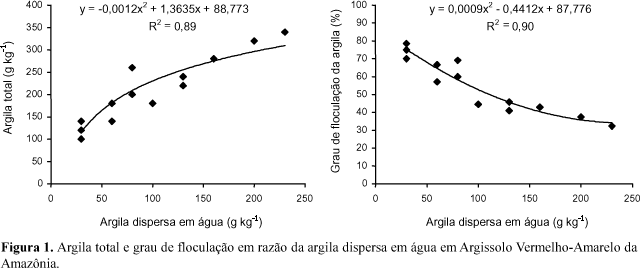The objective of this study was to evaluate: (i) the relation between the degradation of burned Guinea grass pastures and the modifications of some physical and morphological properties of an Amazonian Ultisol; (ii) the root growth of pastures in different degradation stages; and (iii) the potential of rehabilitation of degraded Guinea grass pastures by introducing Gamba grass. On a farm at the eastern Amazon, region of Marabá, PA, Brazil, four pasture types were studied: productive Guinea grass (Panicum maximum Jacq.) pasture; Guinea grass pasture on yield decline; degraded Guinea grass pasture (fallow), and degraded Guinea grass pasture recovered with Gamba grass (Andropogon gayanus Kunth). As reference of the soil original characteristics before clearing, a native forest area was also studied. Burning was an usual practice; moreover, the pastures did not receive fertilizers. Pasture degradation decreased soil covering and exposed the soil surface to the direct impact of rain drops and cattle compaction, what resulted in soil bulk density increase in the superficial layer and decrease in clay flocculation and soil total porosity. Forage yield decline on degraded pasture was accompanied by a decrease on the number of roots on the soil profile, and there was a concentration of the root system close to the surface. Andropogon gayanus showed good potential for the rehabilitation of degraded pastures on the Amazon Region.
Andropogon gayanus; Panicum maximum; burning; soil chemicophysical properties






